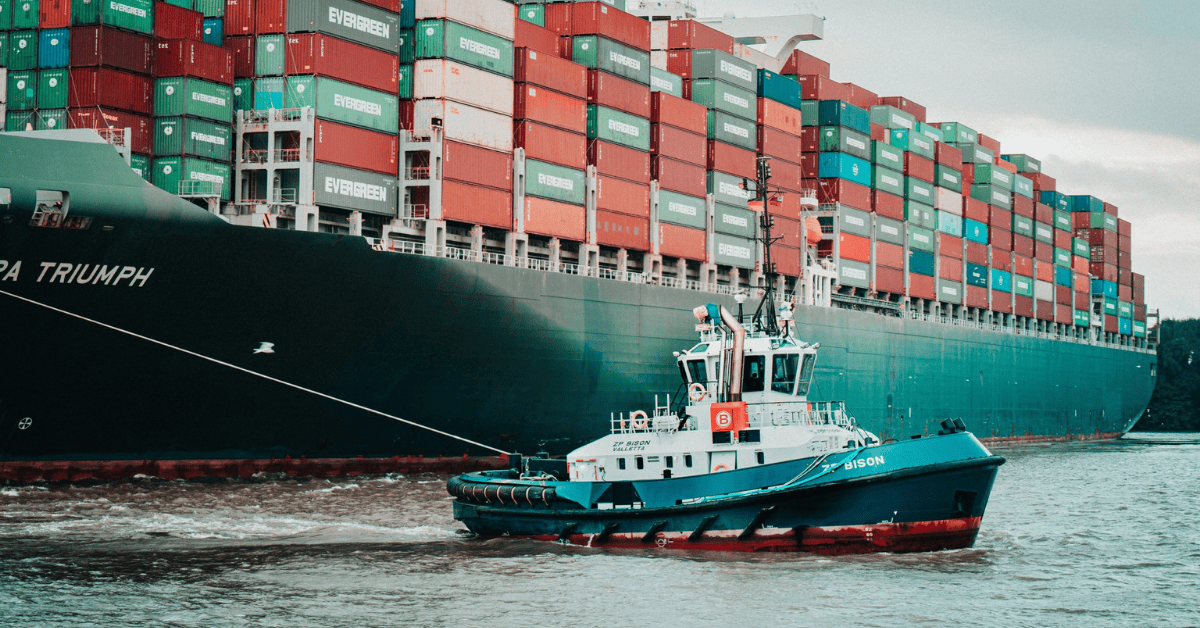Supply Chain Innovations: A Technological Revolution

As the global business landscape evolves, the supply chain logistics industry has witnessed remarkable growth in recent years. The growth is fueled by the surging demand for e-commerce. Meanwhile, globalization propelled supply chain management to become a pivotal pillar of economic prosperity.
Supply chain innovations are increasing efficiency, improving accuracy, and ensuring the customer experience is satisfactory. Let’s dive a little deeper into how supply chain innovations have impacted technology
E-commerce: A Supply Chain Transformation to Deliver Products
The meteoric rise of e-commerce has revolutionized customer behavior, fundamentally altering the way products are purchased and delivered. The shift has placed unprecedented demands on supply chain logistics innovation. It requires a paradigm shift in operations to meet the expectations of online shoppers.
To cater to the rapid growth of e-commerce, supply chain management have embraced innovative supply chain solutions, including:
- Enhanced fulfillment capabilities: Efficient order processing, rapid packing, and timely deliveries have become paramount to e-commerce success.
- Robust warehouse management systems: Optimized inventory tracking, streamlined order picking, and automated sorting have become essential for managing the influx of e-commerce orders.
- Last-mile delivery optimization: Route optimization, real-time tracking, and flexible delivery options have become crucial for ensuring seamless customer experiences.
Globalization: Expanding Supply Chain Horizons
The interconnectedness of the global economy is creating opportunities for businesses to source materials, manufacture products, and distribute goods across borders. Globalization has necessitated the development of:
- Global transportation networks: Efficient and reliable air, sea, and land transportation systems have become indispensable for moving goods across continents.
- Customs brokerage and compliance expertise: Navigating complex customs regulations and ensuring adherence to trade laws have become critical for cross-border operations.
- Multicultural workforce and language proficiency: Understanding cultural nuances and communicating effectively across diverse regions have become essential for seamless global supply chain management.
Because of the growth of supply chain logistics, the industry has spurred a wave of innovation as companies race to meet the ever-increasing demands of a globalized economy.
What is Innovation in Supply Chain Management?
Innovation encompasses the adoption of new technologies, processes, and strategies to enhance the effectiveness of supply chains. The innovations aim to optimize the entire supply chain lifecycle, from procurement to delivery, ensuring seamless product flow and exceptional customer experiences.
Here are a few of the key ways in which this growth has impacted innovation in supply chain logistics:
Increased investment in research and development
The growing importance of supply chain logistics has led to increased investment in research and development. Companies are seeking supply chain innovations to manage complex logistics operations. This has led to the development of new digital technology which are used to increase efficiency, visibility, and sustainability in supply chains.
Greater focus on collaboration and partnerships
The complexity of modern supply chains has made it increasingly important for companies to collaborate and partner with other organizations in order to share information, resources, and expertise. Better collaboration is leading to the development of new and innovative supply chain models, such as collaborative planning, forecasting, and replenishment (CPFR).
A focus on sustainability
As consumers become more environmentally conscious, they want companies to prioritize reducing waste and lower the environmental impact of their supply chains. The focus on sustainability is leading to the development of solutions, such as sustainable packaging, renewable energy, and transportation options.
What is the Latest Technology in Supply Chain Management?
Supply chain management is witnessing a surge in the adoption of cutting-edge technologies, including:
Artificial Intelligence (AI) and Machine Learning (ML)
AI and ML have emerged as transformative forces in supply chain management, empowering businesses to make data-driven decisions, optimize operations, and enhance customer satisfaction.
- Predictive Analytics: Artificial intelligence algorithms can analyze vast amounts of data to identify real-time insights. Predictive data analytics enables businesses to anticipate demand fluctuations, predict potential disruptions, and proactively manage inventory levels to ensure product availability.
- Automated Decision-Making: Machine learning algorithms can automate routine decision-making processes, such as route optimization, demand forecasting, and resource allocation. ML frees up human workers to focus on more strategic tasks and reduces the risk of human error.
- Optimized Resource Allocation: AI-powered tools can analyze real-time data on labor utilization, equipment performance, and inventory levels to optimize resource allocation. It helps businesses maximize productivity, minimize waste, and reduce costs.
Robotic Process Automation
Robotic Process Automation (RPA) is revolutionizing supply chain operations by automating repetitive, rules-based tasks. Here are the benefits of RPA:
- Task Automation: RPA bots can mimic human actions to automate tasks like data entry. RPA frees human workers to focus on higher-value activities that require human judgment and creativity.
- Reduce Errors: RPA bots are immune to human fatigue and errors, ensuring consistent accuracy and efficiency in task execution.
- Scalability: RPA systems can easily scale to handle increased workload without compromising performance, making them ideal for businesses with fluctuating demand.
Internet of Things
Internet of Things (IoT) devices are transforming supply chain visibility by connecting physical assets and devices to the internet, enabling real-time data collection and analysis. Some of the ways IoT devices help supply chain management include:
- Real-time Inventory Tracking: IoT-enabled sensors can monitor inventory levels across warehouse operations, providing real-time visibility into stock levels and preventing stockouts.
- Predictive Maintenance: IoT sensors can monitor equipment performance and identify potential issues before a breakdown. Organizations benefit from proactive maintenance because it reduces downtime and improves asset utilization.
- Environmental Monitoring: IoT sensors can monitor environmental factors such as temperature, humidity, and shock, ensuring optimal conditions for product storage and transportation.
Blockchain Technology
Blockchain is enhancing supply chain transparency and traceability by providing a secure and tamper-proof ledger of transactions.
- Product Authenticity: Blockchain can track the provenance of products from raw materials to final consumers, ensuring product authenticity and combating counterfeiting.
- Streamlined Cross-border Transactions: Blockchain can simplify and secure cross-border transactions, reducing paperwork, eliminating fraud, and accelerating customs clearance.
- Enhanced Traceability: Blockchain can track the movement of goods throughout the supply chain. It’s ideal for quality control since businesses can identify and recall products in case of quality issues or recalls.
Impact of Innovative Technologies on Supply Chain Management
The rapid growth of innovation within the supply chain industry is having a transformative impact on businesses, economies, and the global marketplace. Here’s a comprehensive overview of the key impacts:
Enhanced Efficiency and Productivity
Technologies innovations are driving significant gains in efficiency and productivity across the supply chain. Tools like AI-powered predictive analytics, automated decision-making, and RPA-driven task automation, and IoT-enabled data collection are contributing to:
- Streamlining operations
- Reducing manual effort
- Optimizing resource utilization
- Enabling proactive management of assets and environmental factors
Improved Customer Satisfaction
Innovations are transforming customer experiences by ensuring customers get the product they want, delivered quickly, and provided with personalized service.
Tools like predictive demand forecasting and optimized inventory management are ensuring physical products are available to consumers while reducing stockouts and backorders.
Reduced Costs and Risk
Innovations can reduce costs throughout the supply chain. It’s also reducing business continuity risk. Cost-effective technology helping the supply chain include:
- RPA-driven task automation is reducing labor costs.
- AI-powered optimization is minimizing waste, optimizing transportation routes, and reducing fuel consumption.
- IoT-enabled predictive maintenance are preventing equipment breakdowns, reducing downtime, and lowering maintenance costs.
- Blockchain-enabled traceability is minimizing fraud, streamlining cross-border transactions, and reducing the risk of product counterfeiting.
Increased Agility and Adaptability
Businesses need to respond quickly and effectively to changing market conditions, disruptions, and customer demands. Here are some ways supply chain innovations are helping organizations to pivot:
- Real-time data visibility and analytics are enabling businesses to identify and respond to potential disruptions or supply chain bottlenecks in a timely manner.
- AI-powered predictive analytics are enabling proactive planning and decision-making
- RPA-driven automation is facilitating rapid adjustments to processes and workflows.
Enhanced Sustainability and Environmental Responsibility
Innovations are driving sustainable practices and reducing the environmental impact of supply chains. Some technology that is helping with sustainability include:
- AI-powered optimization is reducing fuel consumption and emissions.
- IoT-enabled monitoring is optimizing energy usage and minimizing waste.
- Blockchain-enabled transparency is facilitating sustainable sourcing practices and ethical supply chains.
Global Economic Growth and Competitiveness
By enhancing efficiency, reducing costs, and improving customer satisfaction, businesses are able to compete more effectively in the global marketplace, expand their reach, and contribute to economic prosperity.
Workforce Transformation and Upskilling
The adoption of new technology is transforming the nature of work in the supply chain and logistics industry. While some tasks are automated, new opportunities are emerging for workers with data analytics, digital literacy, and problem-solving skills. Investments in training and upskilling are crucial to ensure that the workforce can adapt to the changing landscape and continue to contribute to supply chain success.
Real-World Examples of Supply Chain Innovation
Numerous organizations are embracing technology innovations to transform their supply chains. Here are a couple of examples:
Example 1: Amazon’s Robotic Fulfillment Centers
Amazon, a global leader in e-commerce, has revolutionized supply chain operations by implementing a network of robotic fulfillment centers. These centers utilize sophisticated robotic systems to pick, pack, and sort products, significantly enhancing efficiency.
Amazon’s Kiva robots navigate autonomously through the warehouses, retrieving products from shelves, and delivering them to human workers for packing and shipping. The supply chain automation has enabled Amazon to handle massive volumes of orders with remarkable precision, reducing errors, rapid delivery, and minimizing operating costs.
Example 2: Maersk’s AI-Powered Route Optimization
Maersk, a leading global shipping company, has leveraged artificial intelligence (AI) to optimize its shipping routes aimed at reducing fuel consumption and emissions. Maersk’s AI algorithms and geolocation technologies analyze vast amounts of data on weather patterns, traffic congestion, and fuel efficiency to determine the most optimal routes for its fleet of ships.
This AI-driven approach has enabled Maersk to reduce its fuel consumption by up to 15%, significantly lowering its environmental impact and logistics costs. Additionally, optimized routes have reduced transit times and improved delivery schedules. The company benefits from cost-savings while enhancing customer satisfaction.
Key Takeaways
Supply chain logistics can be difficult to manage and keep cost-effective. However, the rise in innovative supply chain solutions means it is easier for companies to maximize their workflow operations.
Supply chain logistics companies like Armstrong have access to the necessary infrastructure and technology to keep your business moving forward. Armstrong can help improve the efficiency of your supply chain and ultimately reduce operational costs for your company.
Reliable Armstrong professionals are embracing innovative solutions to strengthen your company’s supply chain and simplify your logistics process. Our logistics solutions means you can spend more time on the day-to-day operations without worrying about order fulfillment or transportation. Learn more about how Armstrong can help your company’s supply chain.
